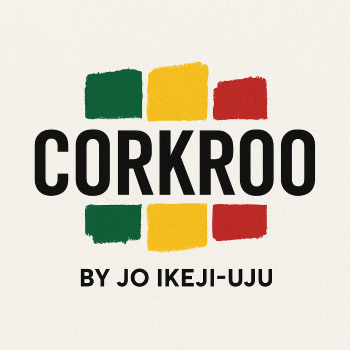Netflix operates in a complex, fast-changing external environment, shaped by regulations, #technology , #market economics, consumer behaviour, and global challenges.
A #PESTLE #analysis helps us understand the macro-environmental factors that affect Netflix’s strategic decisions, risks, and long-term growth.
https://pratsdigital.in/ne...
The reason?
A sharp, evolving, and highly data-driven #marketing #strategy .
In this #article , I’ll break down Netflix’s current marketing strategy (2025) with a approach covering everything from #content strategy to #technology , partnerships, social media, and #growth tactics.
https://pratsdigital.in/ne...
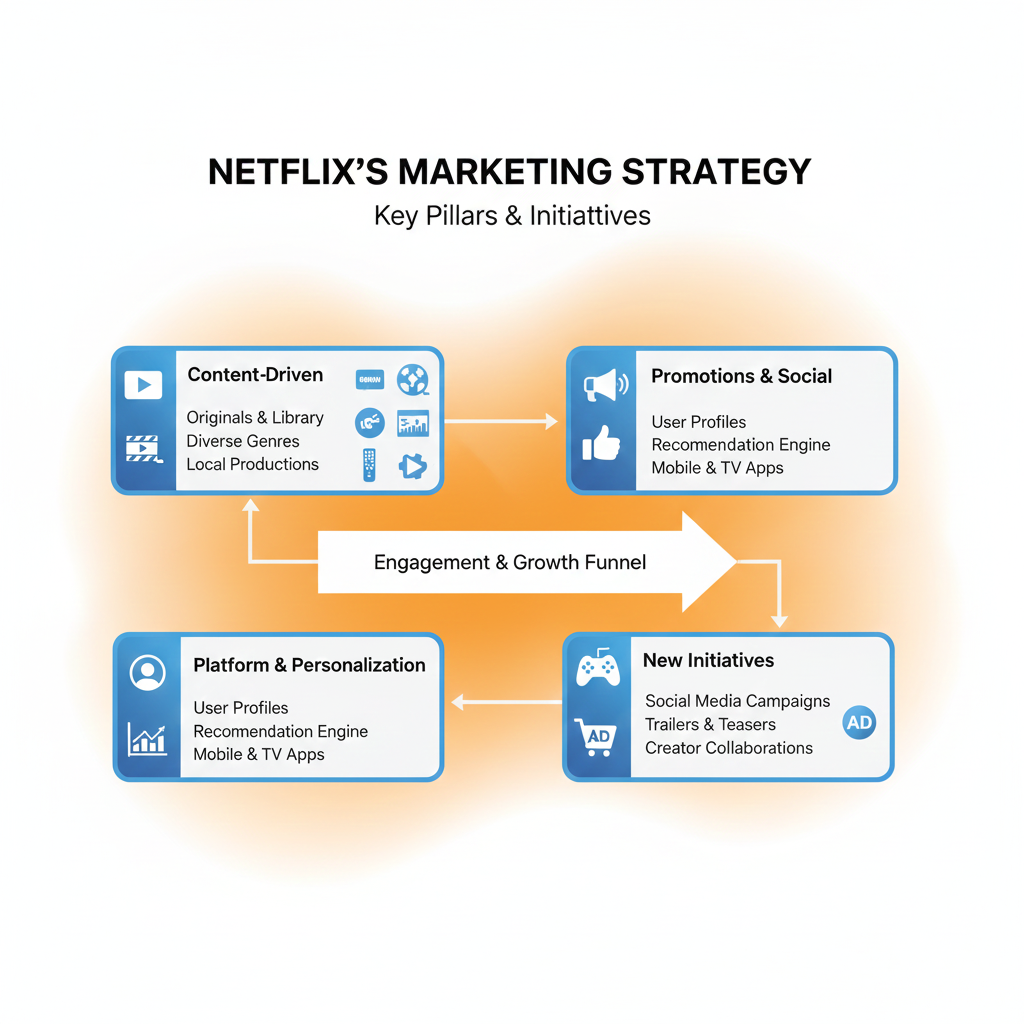
Netflix’s Current Marketing Strategy (2025): A Complete Breakdown - PratsDigital
Netflix’s current marketing strategy explained: data-driven personalization, global content, ad-tier expansion, partnerships, and social media innovations.
https://pratsdigital.in/netflix-current-marketing-strategy/Build a powerful subscription-based content marketplace with Oyelabs’ fully-customizable, white-label OnlyFans clone. Give creators the tools they need—subscriptions, pay-per-view, tips, live streaming, merchandise sales—alongside advanced admin controls, secure payments, and censor-free deployment. Perfect for entrepreneurs ready to tap into the booming creator economy.
🔗 https://oyelabs.com/onlyfa...
#onlyfansclone #CreatorEconomy #SubscriptionApp #MonetizeContent #WhiteLabelSolution

OnlyFans Clone | Launch OnlyFans-Style Creator Marketplace
Launch your creator-friendly content subscription platform with our OnlyFans clone script. Modern UI, 100% customizable script loaded with latest features.
https://oyelabs.com/onlyfans-clone/Build a powerful subscription-based content marketplace with Oyelabs’ fully-customizable, white-label OnlyFans clone. Give creators the tools they need—subscriptions, pay-per-view, tips, live streaming, merchandise sales—alongside advanced admin controls, secure payments, and censor-free deployment. Perfect for entrepreneurs ready to tap into the booming creator economy.
🔗 https://oyelabs.com/onlyfa...
#onlyfansclone #CreatorEconomy #SubscriptionApp #MonetizeContent #WhiteLabelSolution
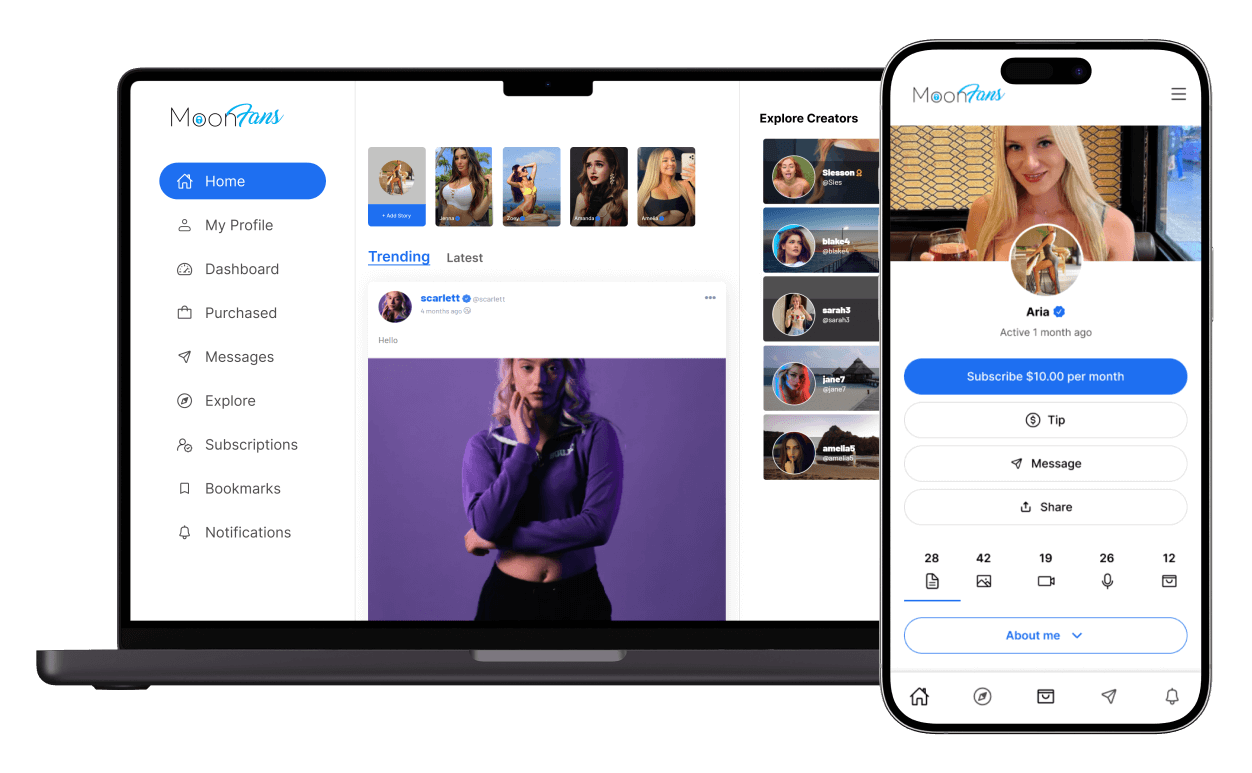
OnlyFans Clone | Launch OnlyFans-Style Creator Marketplace
Launch your creator-friendly content subscription platform with our OnlyFans clone script. Modern UI, 100% customizable script loaded with latest features.
https://oyelabs.com/onlyfans-clone/Build a powerful subscription-based content marketplace with Oyelabs’ fully-customizable, white-label OnlyFans clone. Give creators the tools they need—subscriptions, pay-per-view, tips, live streaming, merchandise sales—alongside advanced admin controls, secure payments, and censor-free deployment. Perfect for entrepreneurs ready to tap into the booming creator economy.
🔗 https://oyelabs.com/onlyfa...
#onlyfansclone #CreatorEconomy #SubscriptionApp #MonetizeContent #WhiteLabelSolution
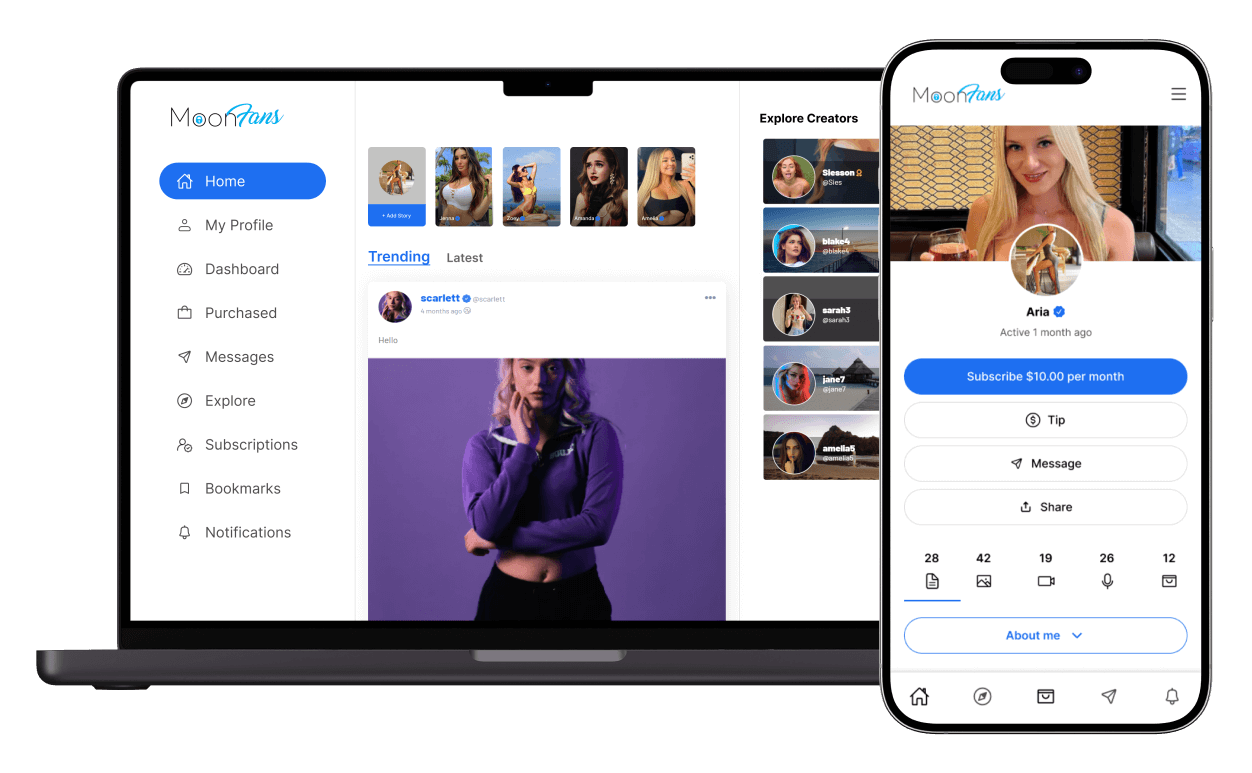
OnlyFans Clone | Launch OnlyFans-Style Creator Marketplace
Launch your creator-friendly content subscription platform with our OnlyFans clone script. Modern UI, 100% customizable script loaded with latest features.
https://oyelabs.com/onlyfans-clone/Build a powerful subscription-based content marketplace with Oyelabs’ fully-customizable, white-label OnlyFans clone. Give creators the tools they need—subscriptions, pay-per-view, tips, live streaming, merchandise sales—alongside advanced admin controls, secure payments, and censor-free deployment. Perfect for entrepreneurs ready to tap into the booming creator economy.
🔗 https://oyelabs.com/onlyfa...
#onlyfansclone #CreatorEconomy #SubscriptionApp #MonetizeContent #WhiteLabelSolution
Launch your own content subscription platform with complete control and flexibility. With Oyelabs’ turnkey OnlyFans clone, you get full access to the source code—allowing unlimited customization, integrations, feature upgrades, and scalability. Perfect for entrepreneurs and agencies looking to build a powerful, branded creator monetization app.
https://oyelabs.com/onlyfa...
#TurnkeySolution #SourceCodeIncluded #onlyfansclone #CreatorPlatform
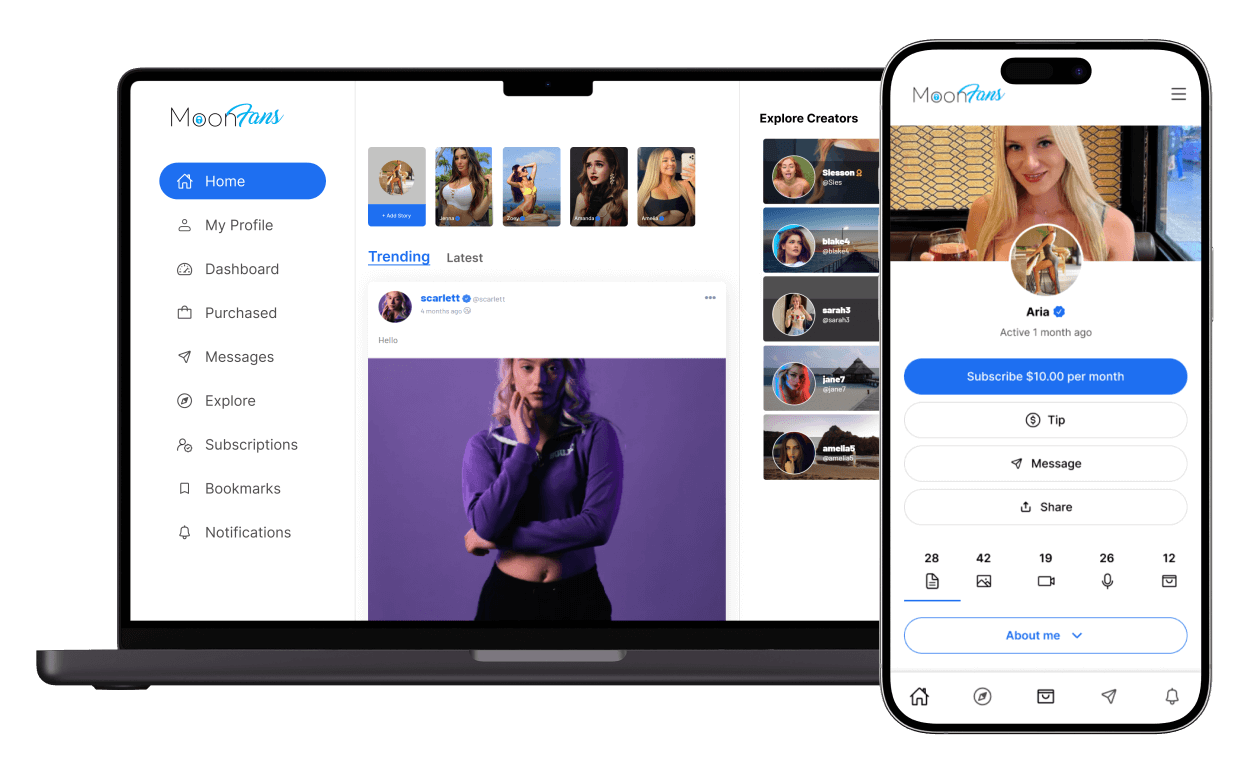
OnlyFans Clone | Launch OnlyFans-Style Creator Marketplace
Launch your creator-friendly content subscription platform with our OnlyFans clone script. Modern UI, 100% customizable script loaded with latest features.
https://oyelabs.com/onlyfans-clone/Empower creators to earn more with Oyelabs’ OnlyFans clone app—featuring subscription-based access, pay-per-view content, tipping, private messaging, and advanced analytics. This fully customizable, white-label solution with complete source code ownership enables you to build and scale a secure, creator-driven platform under your brand.
🔗 https://oyelabs.com/onlyfa...
#onlyfansclone #CreatorMonetization #SubscriptionPlatform #FanEngagement #oyelabs #WhiteLabelSolution #PayPerViewApp #CreatorEconomy #ContentPlatform
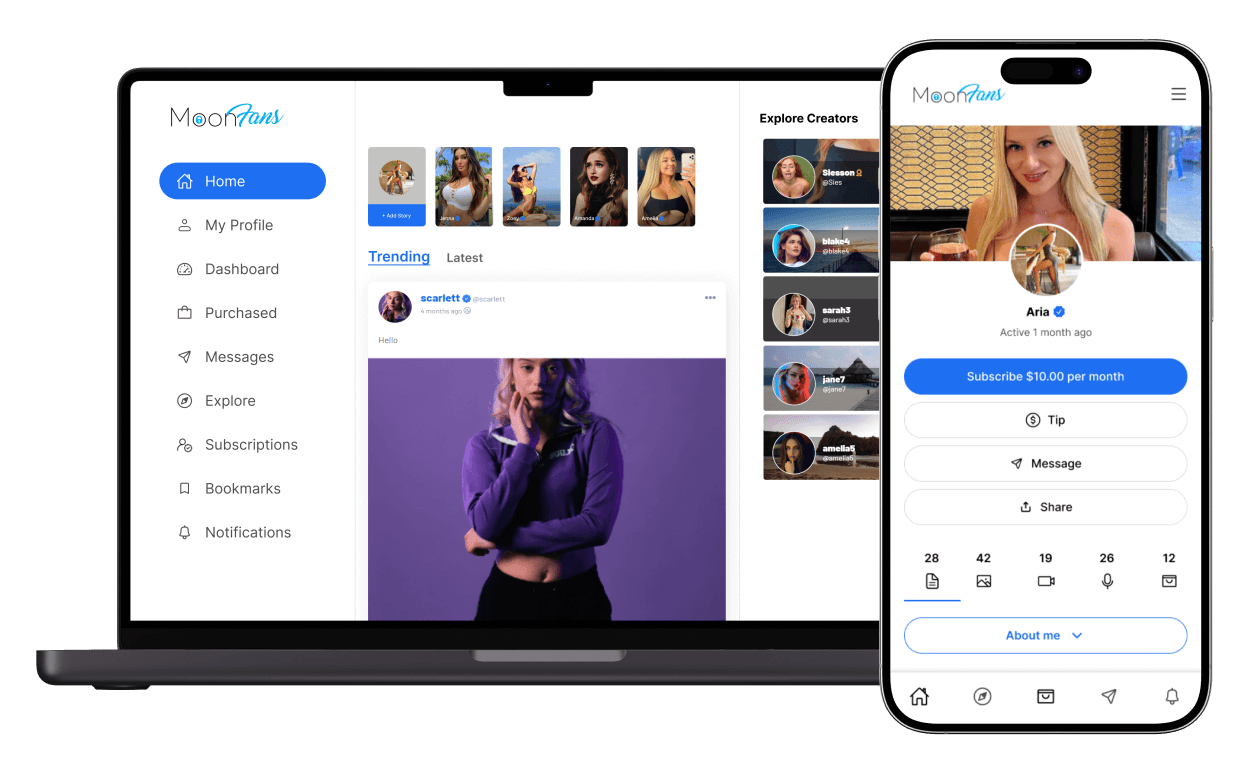
OnlyFans Clone | Launch OnlyFans-Style Creator Marketplace
Launch your creator-friendly content subscription platform with our OnlyFans clone script. Modern UI, 100% customizable script loaded with latest features.
https://oyelabs.com/onlyfans-clone/Empower creators to earn more with Oyelabs’ OnlyFans clone app—featuring subscription-based access, pay-per-view content, tipping, private messaging, and advanced analytics. This fully customizable, white-label solution with complete source code ownership enables you to build and scale a secure, creator-driven platform under your brand.
🔗 https://oyelabs.com/onlyfa...
#onlyfansclone #CreatorMonetization #SubscriptionPlatform #FanEngagement #oyelabs #WhiteLabelSolution #PayPerViewApp #CreatorEconomy #ContentPlatform
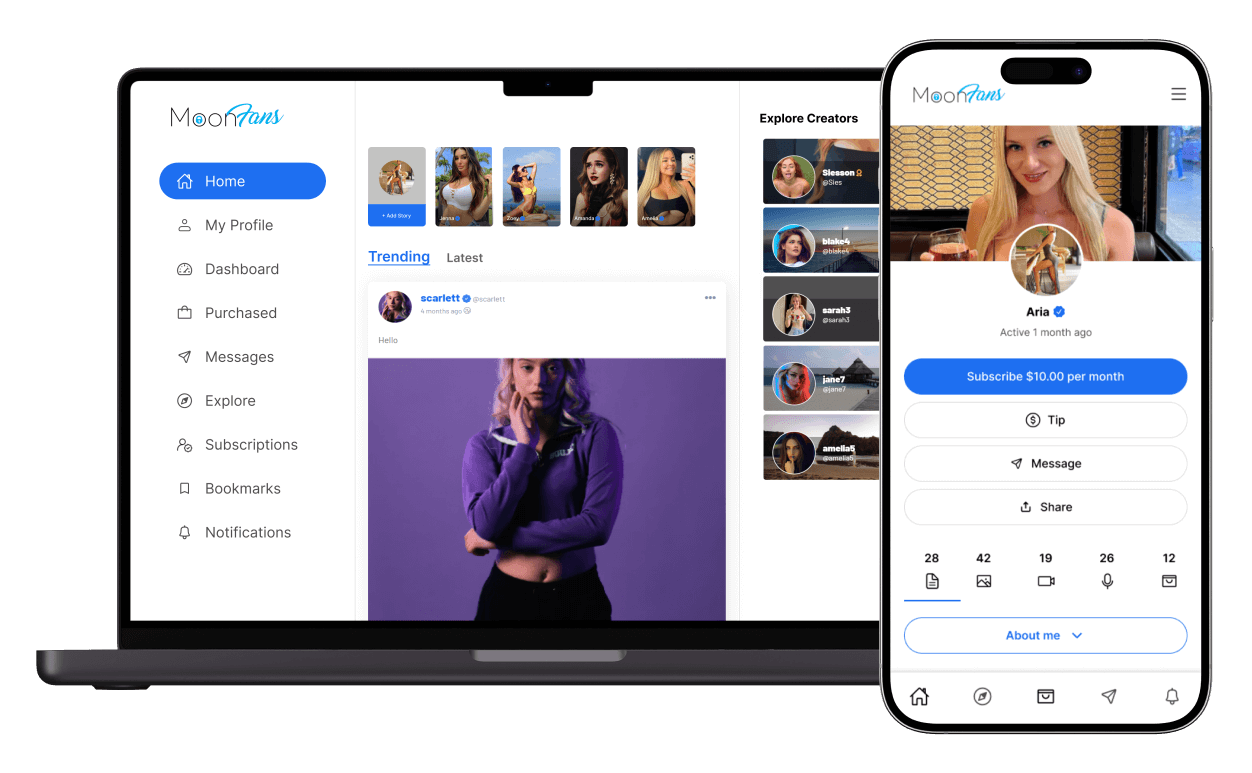
OnlyFans Clone | Launch OnlyFans-Style Creator Marketplace
Launch your creator-friendly content subscription platform with our OnlyFans clone script. Modern UI, 100% customizable script loaded with latest features.
https://oyelabs.com/onlyfans-clone/Empower creators to earn more with Oyelabs’ OnlyFans clone app—featuring subscription-based access, pay-per-view content, tipping, private messaging, and advanced analytics. This fully customizable, white-label solution with complete source code ownership enables you to build and scale a secure, creator-driven platform under your brand.
🔗 https://oyelabs.com/onlyfa...
#onlyfansclone #CreatorMonetization #SubscriptionPlatform #FanEngagement #oyelabs #WhiteLabelSolution #PayPerViewApp #CreatorEconomy #ContentPlatform

OnlyFans Clone | Launch OnlyFans-Style Creator Marketplace
Launch your creator-friendly content subscription platform with our OnlyFans clone script. Modern UI, 100% customizable script loaded with latest features.
https://oyelabs.com/onlyfans-clone/Elevate creators’ monetization with Oyelabs’ OnlyFans clone app—equipped with subscription tiers, pay-per-view access, tipping, messaging tools, content lock/unlock, and analytics dashboards. Fully white-label and customizable with full source code access, this solution helps you launch and scale a creator-centric business under your own brand.
🔗 https://oyelabs.com/onlyfa...
#onlyfansclone #CreatorPlatform #ContentMonetization #SubscriptionApp #oyelabs #PayPerView #FanEngagement #WhiteLabelClone #SecureContent
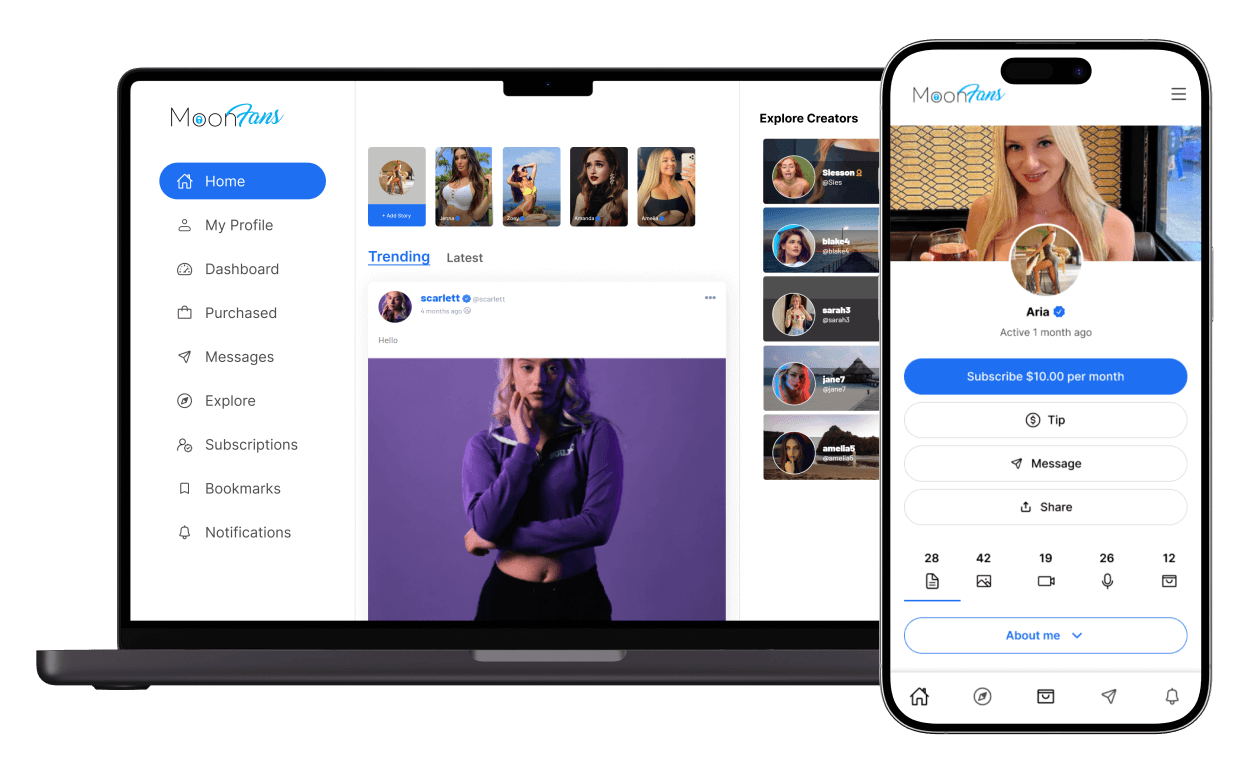
OnlyFans Clone | Launch OnlyFans-Style Creator Marketplace
Launch your creator-friendly content subscription platform with our OnlyFans clone script. Modern UI, 100% customizable script loaded with latest features.
https://oyelabs.com/onlyfans-clone/Empower creators with a feature-rich subscription platform using Oyelabs’ OnlyFans clone app. Enjoy built-in tools like tiered subscriptions, PPV content, tipping, messaging, content locking, and analytics. Fully white-label, scalable, and customizable with source code access—own your brand and future.
🔗 https://oyelabs.com/onlyfa...
#onlyfansclone #ContentMonetization #CreatorPlatform #SubscriptionApp #oyelabs #PPVContent #FanEngagement #WhiteLabelClone

OnlyFans Clone | Launch OnlyFans-Style Creator Marketplace
Launch your creator-friendly content subscription platform with our OnlyFans clone script. Modern UI, 100% customizable script loaded with latest features.
https://oyelabs.com/onlyfans-clone/Turn your passion into profit with the robust OnlyFans clone app by Oyelabs. It’s a white-label, fully customizable solution that offers subscription models, PPV content, AI-driven recommendations, secure payments, KYC/age verification, and a feature-rich creator dashboard. Get full source code and launch quickly—ideal for creators, influencers, and agencies looking to build and monetize their content communities with control.
🔗 https://oyelabs.com/onlyfa...
#onlyfansclone #CreatorPlatform #SubscriptionApp #PPVContent #ContentMonetization #oyelabs #WhiteLabelSolution #SecureCreatorApp
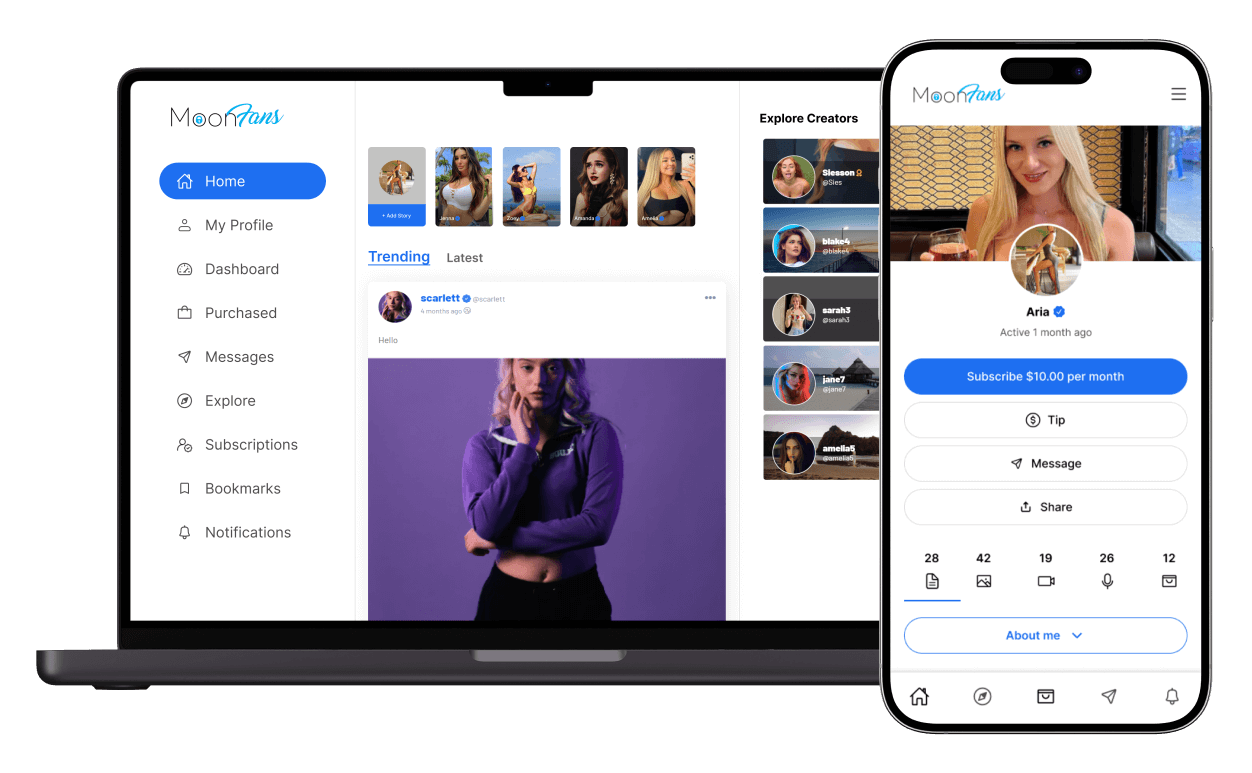
OnlyFans Clone | Launch OnlyFans-Style Creator Marketplace
Launch your creator-friendly content subscription platform with our OnlyFans clone script. Modern UI, 100% customizable script loaded with latest features.
https://oyelabs.com/onlyfans-clone/#onlyfansclone #clone #AppDevelopment #app
https://oyelabs.com/onlyfa...
#onlyfansclone #clone #AppDevelopment #app #onlyfansclonescript #clonescript
https://oyelabs.com/onlyfa...
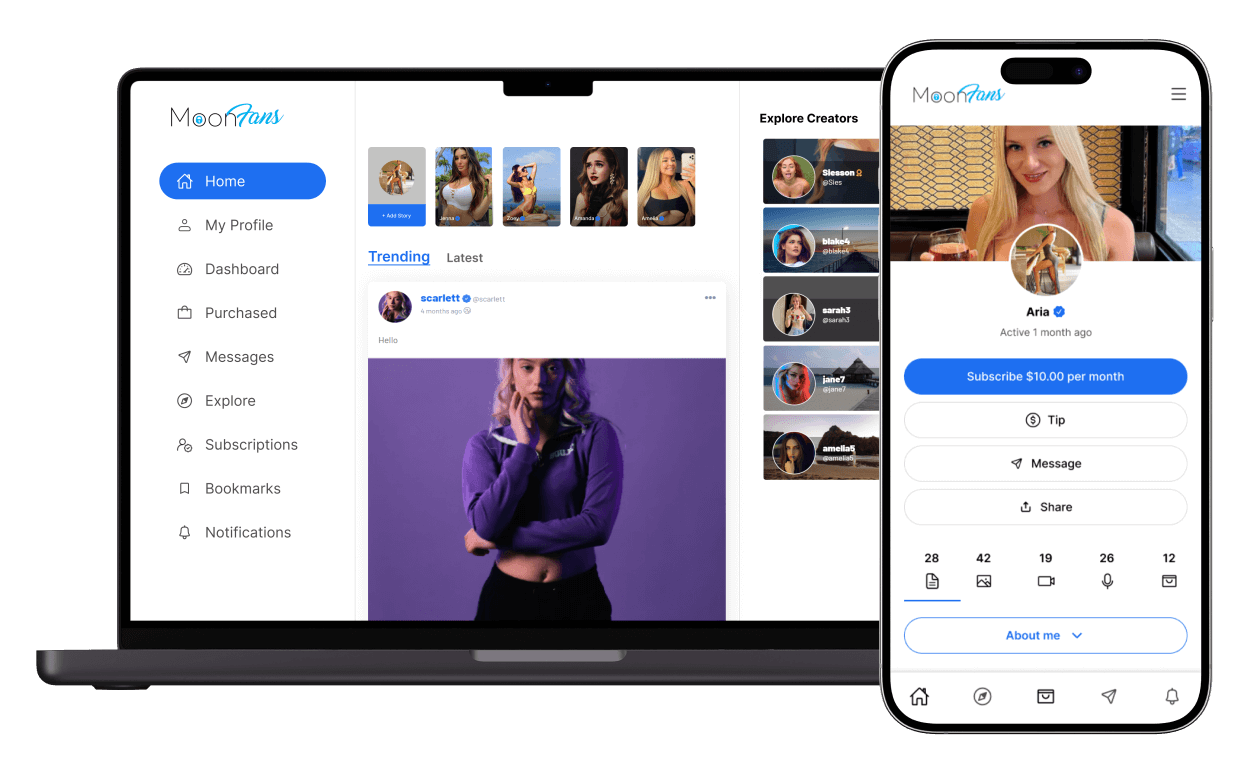
OnlyFans Clone | Launch Subscription-Based Content App in 7 Days
OnlyFans clone to launch your censor-free subscription-based creator community platform with our new age 100% customizable script loaded with latest features.
https://oyelabs.com/onlyfans-clone/(Unspoken Truths | Digital Identity, Influence & Authentic Growth)
They told you to “be professional” and “post consistently.”
But they didn’t teach you how to build trust, tell your story, and grow a brand that actually connects in a world flooded with noise.
Let’s dive into what they don’t teach you:
Personal branding online isn’t about perfection — it’s about clarity, consistency, and connection.
WHAT THEY DON’T TEACH YOU:
1. You Are Already a Brand — Whether You Intend to Be or Not
Every post, comment, share, or bio tells a story about you.
The question is: Are you shaping that story — or letting it happen by accident?
2. Authenticity Is Louder Than Aesthetic
You can have perfect visuals…
But if people can’t feel your values, your mission, or your voice — they won’t connect.
Your personality is your real brand advantage.
3. You Don’t Need to Be an Expert — You Need to Be Real
People follow journeys, not finished products.
Share the process, the lessons, the missteps — that’s what builds loyalty.
4. Clarity Beats Going Viral
If people don’t know:
Who you are
What you stand for
What you offer
…then the likes mean nothing.
Be known for something clear — not everything trendy.
5. Posting Consistently Means Nothing Without Purpose
You don’t need to post every day — but you do need to show up intentionally.
Each post should answer: “What do I want my audience to feel, learn, or do?”
6. Your Story Is Your Power — Even the Messy Parts
-Why you started
-What you've overcome
-What keeps you going
Your lived experience builds credibility and emotional resonance.
7. Community > Followers
100 engaged supporters > 10,000 silent followers.
Build trust, respond to comments, give value — and your brand will grow naturally.
8. Consistency Wins the Long Game
You won’t go viral overnight.
But if you keep showing up with value, clarity, and heart?
You’ll build something that lasts longer than trends.
PERSONAL BRAND CHECKLIST:
-Can I explain who I am, what I do, and who I serve in one sentence?
-Does my content reflect my values, voice, and vision?
-Am I building trust through storytelling, not just selling?
-Do I show up regularly without burning out or faking it?
-Am I nurturing real connections, not chasing vanity metrics?
FINAL THOUGHT:
They didn’t teach you how to build a personal brand online — because they underestimated the power of everyday voices in the digital age.
But now you know:
Your brand isn’t what you say — it’s what people feel when they see or hear from you.
Don’t just market — connect. Don’t just post — lead. Don’t just grow — build meaning.
++++++++++++++++++++++++++++++++++++++++++
HAMAS SURRENDER NOW- WAR GOES ON UNTIL HAMAS SURRENDER.
++++++++++++++++++++++++++++++++++++++++++
The claim that the world and mainstream media are "rewarding Hamas" and "condemning Israel for defending itself" is a highly contentious issue with various perspectives. An analysis of global media coverage and international responses reveals a complex landscape.
Regarding media coverage:
Accusations of Bias: There are widespread and often opposing accusations of bias in media coverage of the conflict. Some critics argue that Western mainstream media often downplays Palestinian suffering and disproportionately focuses on Israeli narratives, while others contend that the media is overly critical of Israel and presents a one-sided view that favors the Palestinian cause.
Differing Terminology: The language used by media outlets is a frequent point of contention. Some outlets have been criticized for using more emotive language like "massacre" or "slaughter" when describing Israeli casualties, but not when reporting on Palestinian deaths.
Access and Censorship: Israel has been criticized for imposing restrictions on international journalists' access to Gaza, leading many news organizations to rely on local Palestinian journalists and freelancers. This has raised concerns about the ability of the media to provide a complete and unfiltered picture of events.
Focus on Humanitarian Crisis: A significant portion of recent media coverage has focused on the humanitarian crisis in Gaza, including reports of starvation and the high number of civilian casualties. This has led to international condemnation of Israel's military actions and calls for a ceasefire.
Regarding international responses:
Initial Condemnation of Hamas: Following the initial attacks by Hamas, many countries, particularly Western nations, strongly condemned the actions of Hamas, expressed solidarity with Israel, and affirmed Israel's right to self-defense.
Growing Criticism of Israel: As the conflict has progressed, a growing number of countries and international bodies have become increasingly critical of Israel's military campaign. This criticism is often linked to the high number of Palestinian casualties, the humanitarian situation, and Israeli military plans for Gaza.
Calls for a Ceasefire: The United Nations and many countries have repeatedly called for a ceasefire or a humanitarian pause. These calls are often driven by concerns about civilian lives and the unfolding humanitarian crisis.
Lack of a Unified "International Community": It's important to note that there isn't a single "international community" with a unified voice. Responses to the conflict vary widely, with different countries and organizations taking diverse positions based on their political alignments, historical ties, and domestic public opinion.
+++++++++++++++++++++++++++++++++++++++++
The question of why various groups are not calling for Hamas to surrender and release all hostages, dead or alive, is complex and has multiple facets. While many countries and international bodies have indeed made such calls, there are several reasons why this is not a universally adopted or consistently emphasized position.
1. The "All or Nothing" Stance of the Parties Involved:
Hamas's Position: Hamas has consistently stated that a full release of hostages is contingent on a permanent ceasefire, the complete withdrawal of Israeli forces from Gaza, and the release of a large number of Palestinian prisoners. For Hamas, the hostages are a primary bargaining chip to achieve its political and military objectives. From its perspective, surrendering and releasing hostages without these concessions would be a complete loss and negate its strategic advantage.
Israel's Position: Israel's stated war aims have been the destruction of Hamas's military and governing capabilities and the return of all hostages. However, some critics argue that Israel's actions, such as rejecting certain ceasefire proposals and expanding military operations, have not always prioritized the return of hostages, suggesting that other goals like territorial control or the "dismantling" of Hamas are also major drivers. The Israeli government has been criticized for not accepting deals that would secure hostage release in exchange for ending military operations, with some claiming that this demonstrates that the return of hostages is not its central priority.
2. The Role of Ceasefire Negotiations:
Mediated Diplomacy: The focus of many international actors, including the United States, Qatar, and Egypt, has been on brokering a ceasefire deal that includes a phased release of hostages in exchange for Palestinian prisoners and a temporary pause in fighting. This approach is seen as a more realistic path to securing the hostages' release than demanding an unconditional surrender, which Hamas has repeatedly rejected. The goal is to create a pathway for de-escalation and humanitarian aid, not to achieve a total military victory for one side.
Hamas's Perceived Leverage: For many international observers, a call for an unconditional surrender is seen as an unrealistic demand that would likely be ignored by Hamas. This is because the group views the hostages as its most valuable asset in the negotiation process. Many believe that such a call would not only be ineffective but could also prolong the conflict and endanger the lives of the remaining hostages.
3. Political and Public Opinion Dynamics:
Diverse Views on the Conflict: The international community is not a monolith. Different countries have different relationships with Israel and the Palestinians, and their domestic political landscapes shape their official positions. Many countries that are critical of Israel's military actions are more inclined to call for an immediate and permanent ceasefire, which they believe is the only way to alleviate the humanitarian crisis, rather than focusing solely on a call for Hamas's surrender.
Differing Objectives: While many people around the world want to see the hostages released, many also believe that the humanitarian crisis in Gaza and the long-term conflict are the more pressing issues. As a result, their calls for action are focused on a cessation of hostilities and the delivery of aid, rather than a demand for Hamas's surrender. Some observers believe that Hamas's actions, while condemned, have strategically brought the Palestinian cause back to the forefront of global conversation, which for some is a more significant development than the group's surrender.
In short, while calls for Hamas to release the hostages are indeed made by many, the absence of a universal call for unconditional surrender is a reflection of the complex realities on the ground, the perceived futility of such a demand, the strategic priorities of the key actors, and the diverse perspectives within the international community regarding the conflict.
What if your app could predict what users want, before they even type in a search? That’s the power of AI recommendations. Do you want to know how to implement AI-powered product recommendations in your Amazon clone? Here are some steps. Let's dive in.
What is AI-Powered Recommendation?
An artificially intelligent system that makes real-time product recommendations to consumers based on their interests, behaviour, and previous purchases is known as an AI-powered recommendation system in e-commerce. AI customises the shopping experience to boost sales, engagement, and customer satisfaction rather than displaying the same product list to every user.
Types of recommendation strategies:
1. Collaborative Filtering
Collaborative Filtering is a recommendation strategy that recommends products based on user activity and preferences rather than product information in an Amazon-like app.
User-based collaborative filtering detects folks who share similar interests. If a user likes a product, it will be recommended to another person who shares their interests.
Item-based collaborative filtering: This type of filtering shows recommendations based on similarities. For example, it recommends a phone case to the people who purchased New phones.
2. Content-based Filtering:
Content-based filtering recommends products based on the traits or features that the customer has previously purchased. For example, if you frequently buy or see bags, the algorithm would suggest alternatives or products with comparable characteristics such as brand, style, price range, or material.
3. Hybrid Filtering:
Hybrid filtering blends collaborative filtering, which proposes products based on the preferences of other users, with content-based filtering, which recommends items similar to those a user has previously liked. This strategy takes advantage of both methods' strengths while correcting their faults, yielding more accurate and personalised recommendations.
4. Trending and popular items:
In an Amazon clone website, Trending or Popular Items recommendations highlight things that are currently best-sellers, most viewed, or highly rated throughout the platform or within a category. Helping consumers find popular, in-demand items while increasing interaction and revenue.
5. Personalized rankings:
Personalized rankings reorder the search results or other lists of items based on users' preferences and behaviour. Instead of showing the same products to every user, it improves the user experience and increases the platform engagement.
Implementing AI-powered recommendations in an Amazon clone app:
Implement AI-powered suggestions in your Amazon clone. You should concentrate on collecting data, selecting the best AI solution, and optimising recommendations.
1. Data Collection and analysis:
Collect vast data: Gather the users' purchase history, product preferences, browsing habits, and product interactions such as clicks, add to cart, and reviews. Collecting these diverse data points provides a detailed picture of each customer's interests and habits.
2. Choosing the Right AI Solution:
Utilise data points: Analyse individual consumer preferences, detect bigger trends across users, and create dynamic customer profiles that evolve as new data is received.
Ensure data privacy: When developing AI-powered product suggestions, you must protect the privacy and security of user data. Encryption, secure servers, and access controls can all help to protect user data from unauthorised access. This is especially important when dealing with sensitive information such as purchasing history, behaviour, or personal details.
Consider Your Needs: Before deciding on an AI recommendation, you should first understand your business goals, budget, and technical resources.
Investigate diverse AI models: There are several recommendation models, each with a unique function. There are three types of filtering: collaborative, content-based, and hybrid.
Look for user-friendly options: If you're not ready to start from scratch with an Amazon clone website, look for choices that are easy to use. Many e-commerce platforms have built-in AI recommendation algorithms or third-party applications.
3. Implementing and optimizing recommendations:
Integrate cross-platform: Ensure that your recommendations are consistent and personalised across all platforms, including the website, email marketing, mobile app, and even customer support chat. This will improve the user experience and maintain personalisation seamlessly.
Use various formats: Use several recommendation styles, such as pop-ups and inline sections, to keep shoppers' attention at different phases of their purchasing journey.
A/B testing and optimisation: Continuously monitor the performance of the recommendations and make improvements depending on data and user input.
Focus on user experience: Make sure that recommendations are not only appropriate but also easy to navigate, quick to load, and visually integrated on mobile sites.
Prioritise Explainability: Be open about how recommendations are made, and give users control over their preferences.
Begin small, then scale: Start with a pilot or test group to validate performance and get feedback. Use this feedback to develop and expand your recommendation system throughout the platform.
Benefits of AI-powered recommendations:
1. Improved conversion performance:
The AI algorithm examines clients' browsing histories and purchasing habits to help them get what they want without using their hands. This will boost your Amazon clone conversion rate.
2. Enhanced user experience:
This AI-powered customised suggestion saves users time and effort by guiding them to the proper products. The end outcome is customer satisfaction and a good purchasing experience.
3. Increased average order value:
AI-powered suggestions in your Amazon clone app encourage customers to buy complementary, upsell, and cross-sell items, which raises the overall order value.
4. Insights based on data:
Artificial intelligence (AI) recommendation systems gather and analyse consumer data to learn about preferences and purchasing habits. Businesses can use this to enhance their marketing, select better products to sell, and more effectively manage their inventory.
5. Improved customer retention:
When users consistently receive relevant product recommendations, they are more likely to return to the platform. This strengthens brand presence and generates recurring sales.
6. Enhanced marketing strategies:
AI-powered recommendations customize marketing strategies based on each customer’s individual preferences and behaviors. This personalized approach results in more relevant and engaging marketing campaigns that resonate better with customers, ultimately increasing their interest and likelihood to respond positively.
7. Reduced cart abandonment:
AI-powered recommendations lower cart abandonment by using personalized recommendations, timely reminders, and providing discounts or free shipping. These strategies help users complete their purchases and increase the overall sales rates in your Amazon clone website.
8. Real-time discovery:
This enables AI to make real-time product recommendations to users based on their interests, assisting consumers in finding things they may not have previously found. It is most helpful in vast product catalogues where customers may find manual searching daunting. AI speeds up, simplifies, and enhances the pleasure of shopping by providing timely and pertinent recommendations.
Summing up:
I hope this blog helps you understand the importance of Artificial Intelligence in product recommendations for your Amazon clone app.
It covers the implementation of AI-powered recommendation systems, different types of recommendation strategies, and their benefits.
Now is the perfect time to launch AI-powered recommendations in your Amazon clone app.
https://www.trioangle.com/...
#EcommercePlatform #TechForBusiness #AmazonCloneScript #USAeCommerce #EcommerceLondon #MiddleEastEcommerce #SAOnlineStore # OnlineMarketplace
#MultiVendorMarketplace #DigitalRetailUSA #UAEStartupScene #MarketplaceTrends
Making quality education more accessible in rural areas of Nigeria is a complex undertaking that requires a holistic and sustained approach, addressing issues across infrastructure, human resources, technology, community engagement, and funding.
Here's how it can be achieved:
I. Infrastructure and Facilities Development:
Context-Specific School Construction and Renovation:
Durable & Local Materials: Build and renovate school buildings using durable, locally sourced, and climate-appropriate materials. Designs should consider natural lighting and ventilation.
Essential Amenities: Ensure all schools have basic facilities: clean and functional toilets (separate for boys and girls), access to clean water, reliable electricity (solar power is a viable option), and proper ventilation.
Flexible Learning Spaces: Create adaptable classrooms that can accommodate different learning styles and potentially multi-grade teaching, which is common in smaller rural schools.
Libraries and Labs: Equip schools with functional libraries and basic science/computer laboratories. These can be shared resources among clusters of schools.
Mobile and Satellite Learning Centers:
For extremely remote or sparsely populated areas, explore mobile classrooms or "learning hubs" that rotate among communities, or satellite learning centers that provide access to digital resources and connectivity.
II. Qualified and Motivated Teachers:
Incentives for Rural Deployment:
Improved Remuneration: Offer attractive salary packages, allowances, and hardship pay for teachers willing to serve in rural areas.
Housing and Utilities: Provide subsidized or free housing, access to reliable electricity, and potable water to make rural living more appealing.
Career Advancement Opportunities: Create clear pathways for career progression for rural teachers, linked to performance and continuous professional development.
Loan Forgiveness/Scholarships: Offer student loan forgiveness or scholarships to aspiring teachers who commit to serving in rural schools for a specified period.
Targeted Recruitment and Training:
Local Recruitment: Prioritize recruiting teachers from within or near rural communities, as they are often more likely to stay due to existing ties.
Specialized Training: Equip teachers with skills for multi-grade teaching, differentiated instruction, and managing large classes. Training should also cover culturally sensitive pedagogy and community engagement.
Continuous Professional Development (CPD): Implement regular, accessible, and relevant CPD programs, utilizing blended learning models (online modules, local workshops) to reduce travel burdens.
Mentorship Programs: Pair experienced urban teachers with rural counterparts for mentorship and support.
III. Leveraging Technology (Bridging the Digital Divide):
Sustainable Power and Connectivity:
Solar Power: Prioritize equipping rural schools with reliable solar power systems to run computers, projectors, and charging stations.
Affordable Internet: Work with telecom providers and government agencies (e.g., NCC, NITDA) to extend affordable, reliable internet connectivity to rural areas, perhaps through community Wi-Fi hotspots or satellite internet.
Digital Learning Resources:
Tablets/E-readers: Provide students and teachers with rugged, low-cost tablets preloaded with digital textbooks, educational apps, and interactive learning content (e.g., "Solar-Powered Tablets").
Learning Management Systems (LMS): Implement simple LMS platforms that can deliver content offline and sync when connectivity is available.
Educational TV/Radio: Utilize existing media (radio, TV) to deliver curriculum-aligned lessons, especially in areas with limited internet access.
Teacher Digital Literacy Training:
Train teachers not just on how to use technology, but how to integrate it effectively into their pedagogy to enhance learning outcomes.
IV. Community Engagement and Ownership:
School-Based Management Committees (SBMCs):
Strengthen and empower SBMCs with genuine decision-making authority and training in financial management, school development planning, and monitoring.
Encourage active participation of parents, traditional leaders, and community members in school governance, resource mobilization, and monitoring teacher attendance and performance.
Community Contributions:
Foster a sense of community ownership by encouraging local contributions (labor, materials, financial support) for school development projects.
Integrate schools into community life, making them centers for community development, adult literacy programs, and health awareness.
Sensitization and Advocacy:
Conduct targeted campaigns to raise awareness among rural parents about the value of education, especially for girls, and discourage child labor or early marriage.
V. Funding and Policy:
Increased and Targeted Funding:
Higher Education Allocation: Significantly increase the overall budget allocation to education, ensuring a substantial portion is dedicated to rural school development and teacher welfare.
Specific Rural Education Fund: Establish a dedicated fund for rural education, managed transparently, to address unique challenges.
Public-Private Partnerships (PPPs): Encourage and incentivize private sector involvement through CSR initiatives, grants, and direct investment in rural schools.
Innovative Financing: Explore mechanisms like education bonds, diaspora engagement, and philanthropic partnerships to supplement government funding.
Flexible and Context-Specific Policies:
Local Curriculum Adaptation: Allow for some flexibility in curriculum delivery to address local contexts, needs, and cultural nuances, while maintaining national standards.
Remote Learning Policies: Develop clear policies for remote and blended learning that can be effectively deployed during emergencies or to support continuous learning.
Data-Driven Planning: Establish robust data collection and analysis systems to identify out-of-school children, monitor learning outcomes in rural areas, and allocate resources effectively based on needs.
Making quality education accessible in rural Nigeria requires sustained political will, a commitment to transparent resource utilization, and genuine collaboration among all stakeholders to overcome the geographical, economic, and social barriers.
To protect and grow local manufacturing against cheap imports, governments can implement a mix of protectionist policies and incentives for domestic industries. These strategies aim to either make imports less competitive or boost the capabilities and competitiveness of local businesses.
Protectionist Policies
These policies directly address the challenge of low-priced imports by raising their cost or limiting their quantity.
Tariffs: A tariff is a tax on imported goods. By increasing the price of imports, tariffs make locally produced goods more attractive to consumers. Governments can use specific tariffs (a fixed fee per unit) or ad valorem tariffs (a percentage of the item's value).
Import Quotas: This is a non-tax barrier that sets a strict limit on the volume of a specific good that can be imported over a given period. Quotas reduce the supply of foreign goods, which drives up their price and creates a market for domestic producers to fill the gap.
Anti-Dumping Duties: "Dumping" occurs when a foreign company sells its products in an export market at a price below its production cost to gain market share. Governments can impose special tariffs, known as anti-dumping duties, on these goods to level the playing field and prevent predatory pricing that could destroy local industries.
Local Content Requirements: This policy mandates that a certain percentage of a product's components or labor must be sourced locally. This measure is often used in sectors like automotive manufacturing or electronics to build a domestic supply chain and foster related industries.
Incentives and Support for Local Industry
Beyond restricting imports, governments can also take proactive steps to make local businesses more competitive.
Subsidies and Financial Support: Governments can provide financial assistance to local manufacturers through cash grants, low-interest loans, or tax breaks. These subsidies help reduce the cost of production, making local products more affordable and competitive without directly raising consumer prices.
Investment in Infrastructure and Technology: Improving a nation's infrastructure, such as power grids, transportation networks, and ports, can significantly lower the operational costs for local businesses. Governments can also fund research and development or offer tax credits for businesses that invest in new technology to improve efficiency and productivity.
Export Promotion: Policies that support local firms in selling their products abroad can help them achieve economies of scale. This includes government-sponsored trade missions, export subsidies, and assistance with marketing and logistics. A larger market allows companies to grow, become more efficient, and better withstand foreign competition at home.
"Buy Local" Campaigns: These are public awareness campaigns that encourage consumers and government agencies to prioritize purchasing locally made goods. For example, a "Buy Local" program for government procurement can guarantee a steady market for domestic producers, providing a stable foundation for growth.
The Department of Justice said Chengxuan Han is charged with smuggling goods into the U.S. and making false statements.
According to the complaint, Han is a citizen of the PRC who is working on her Ph.D. at the College of Life Science and Technology in the Huazhong University of Science and Technology in Wuhan.
Han allegedly sent four packages to the U.S. from the PRC in 2024 and 2025, containing concealed biological material. The packages were sent to individuals at a laboratory at the University of Michigan.
Han arrived at the Detroit Metropolitan Airport on Sunday on a J1 visa, when CBP officers conducted an inspection.
During the inspection, Han allegedly made false statements about the packages and the materials she previously shipped to the U.S. CBP officers also discovered the content of Han’s electronic device had been deleted three days before she arrived in the U.S.
After the inspection, FBI agents and agents from U.S. Immigration and Customs Enforcement (ICE) interviewed Han. During the interview, Han allegedly admitted to sending the packages and revealed they contained material related to round worms. She also allegedly confessed to making false statements to CBP officers during the inspection.
"The alleged smuggling of biological materials by this alien from a science and technology university in Wuhan, China—to be used at a University of Michigan laboratory—is part of an alarming pattern that threatens our security," U.S. Attorney Jerome F. Gorgon, Jr. said. "The American taxpayer should not be underwriting a PRC-based smuggling operation at one of our crucial public institutions."
Poland’s parliament this week approved a new public holiday on July 11 to commemorate victims of a “genocide” committed by Ukrainian nationalist groups during the conflict.
The date marks what Poles call “Volhynian Bloody Sunday”, when a 1943 operation by Ukrainian death squads killed thousands of civilians in settlements across the Wolyn province, which is mostly now in Ukraine and known as Volyn.
Ukraine’s foreign ministry attacked the move, saying the decision to commemorate what it described as a “so-called genocide” flew in the face of “good neighbourly relations between Ukraine and Poland”.
“Poles should not look for enemies among Ukrainians, and Ukrainians should not look for enemies among Poles. We have a common enemy – Russia,” it said.
It added: “The path to true reconciliation lies through dialogue, mutual respect and joint work by historians, rather than through unilateral political assessments.”
Volodymyr Zelensky has commemorated the massacre with the laying of wreaths, but labelling the killings a genocide continues to be a contentious issue between the two countries.
Although Poland has been one of Ukraine’s staunchest backers in its fight against Russia, relations have been strained due to rows over EU policies that favour Ukrainian agriculture.
Polish farmers have picketed the Ukraine border to protest grain shipments being diverted from the Black Sea through Poland, a move, they say, which undercuts domestic produce. Brussels has also scrapped tariffs on Ukrainian grain, although this duty-free regime is set to end on July 5.
Karol Nawrocki, Poland’s new president, has also struck a more critical tone than his predecessor on support for Ukraine, saying Kyiv should not be admitted to the EU. Though the president’s role is largely ceremonial, he has the power to veto legislation.
An estimated 100,000 Poles were killed by Ukrainian nationalists during the Second World War in an attempt to ensure that Wolyn did not become part of postwar Poland.
The Bloody Sunday attack was planned so that the death squads would surprise as many Poles as possible during the Sunday mass, according to the Second World War Museum in Gdansk.
Officials organising a NATO summit in The Hague this month are expected to keep it short, restrict discussion of Ukraine, and choreograph meetings so that Volodymyr Zelenskiy can somehow be in town without provoking Donald Trump.
Though the Ukrainian president is widely expected to attend the summit in some form, NATO has yet to confirm whether he is actually invited. Diplomats say he may attend a pre-summit dinner but be kept away from the main summit meeting.
Whether the brief summit statement will even identify Russia as a threat or express support for Ukraine is still up in the air.
The careful steps are all being taken to avoid angering Washington, much less provoking any repeat of February's White House blow-up between Trump and Zelenskiy that almost torpedoed the international coalition supporting Kyiv.
NATO's European members, who see Russia as an existential threat and NATO as the principal means of countering it, want to signal their continued strong support for Ukraine. But they are also desperate to avoid upsetting a volatile Trump, who stunned them at a summit seven years ago by threatening to quit the alliance altogether.
If Zelenskiy does not attend in some form, it would be "at least a PR disaster", acknowledged a senior NATO diplomat.
Since Russia's invasion three years ago, Zelenskiy has regularly attended NATO summits as the guest of honour, where alliance members pledged billions in weapons and condemned Russia for an illegal war of conquest. Leaders repeatedly promised that Ukraine would one day join NATO.
But since Washington's shift under Trump towards partly accepting Russia's justifications for the war and disparaging Zelenskiy, the 32-member alliance no longer speaks with a single voice about Europe's deadliest conflict since World War Two. Trump has taken Ukraine's NATO membership off the table, unilaterally granting Moscow one of its main demands.
After dressing down Zelenskiy in the Oval Office in February, Trump cut vital U.S. military and intelligence support for Ukraine for days.
Since then, the two men publicly mended fences in a meeting in St Peter's Basilica for the funeral of Pope Francis. But mostly they have spoken remotely, with Zelenskiy twice phoning the White House on speakerphone while surrounded by four friendly Europeans -- Britain's Keir Starmer, France's Emmanuel Macron, Germany's Friedrich Merz and Poland's Donald Tusk.
SPENDING BOOST-
Trump is expected to come away from The Hague with a big diplomatic victory as NATO members heed his longstanding complaints that they do not spend enough on defence and agree a much higher target.
They are expected to boost their goal for traditional military spending to 3.5% of economic output from 2%. A further pledge to spend 1.5% on related expenses such as infrastructure and cyber defence would raise the total to 5% demanded by Trump.
But the summit itself and its accompanying written statement are expected to be unusually short, minimising the chances of flare-ups or disagreements. A pledge to develop recommendations for a new Russia strategy has been kicked into the long grass.
Meanwhile, Zelenskiy may have to be content with an invitation to a pre-summit dinner, hosted by Dutch King Willem-Alexander, diplomats say.
Unlike at NATO’s previous two annual summits, the leaders do not plan to hold a formal meeting of the NATO-Ukraine Council, the official venue for talks between the alliance and Kyiv. The senior NATO diplomat said a working dinner with either foreign ministers or defence ministers could instead serve as an NUC.
'PROPERLY REPRESENTED'
On Wednesday, NATO boss Mark Rutte said he had invited Ukraine to the summit, but sidestepped a question on whether the invitation included Zelenskiy himself.
After meeting Rutte on Monday, Zelenskiy said on X that it was "important that Ukraine is properly represented" at the summit. "That would send the right signal to Russia," he said.
U.S. and Ukrainian officials did not reply to questions about the nature of any invitation to Ukraine.
Some European countries are still willing to say in public that they hope to see Zelenskiy invited as the head of the Ukrainian delegation.
Estonian Defence Minister Hanno Pevkur said he would like to see a "delegation led by President Zelenskiy". Asked about an invitation for Zelenskiy, German Defence Minister Boris Pistorius said "I, for my part, strongly welcome the invitation" without giving further details.
But diplomats have tried to play down the importance of the formal status of Zelenskiy's role: "Many allies want to have Zelenskiy at the summit, but there is flexibility on the precise format that would allow his presence," said a second senior NATO diplomat.
A senior European diplomat said: "We should not get stuck on ‘NUC or no NUC’. If he comes to the leaders’ dinner, that would be the minimum."
Lee, who rose from childhood poverty to become South Korea’s leading liberal politician vowing to fight inequality and corruption, began his term earlier Wednesday, hours after winning a snap election that was triggered in April by the removal of then-President Yoon Suk Yeol over his ill-fated imposition of martial law late last year.
In his inaugural address at the National Assembly, Lee said that his government will deal with North Korean nuclear threats and its potential military aggressions with “strong deterrence” based on the South Korea-U.S. military alliance. But he said he would “open a communication channel with North Korea and establish peace on the Korean Peninsula through talks and cooperation.”
He said he’ll pursue pragmatic diplomacy with neighboring countries and boost trilateral Seoul-Washington-Tokyo cooperation.
"Through pragmatic diplomacy based on national interests, we will turn the crisis posed by the major shift in global economic and security landscapes into an opportunity to maximize our national interests,” Lee said.
Security and economic challenges lie ahead
It was unclear whether Lee’s election would cause any major, immediate shift in South Korea’s foreign policy. Lee, previously accused by critics of tilting toward China and North Korea and away from the U.S. and Japan, has recently repeatedly stressed South Korea’s alliance with the U.S. as the foundation of its foreign policy and avoided any contentious remarks that would raise questions on his views on the U.S. and Japan.
The US and China have in recent days both accused each other of violating their fragile, three-week-old trade truce. The two presidents are expected to speak this week in an effort to rescue the deal.
But Trump has a tough pill to swallow: it is his arch-rival who looks to have the better negotiating hand.
China’s near-total dominance of the world’s supply of rare-earth metals – which are used in the manufacture of everything from cars and computer chips to F-35 fighter jets and nuclear-powered submarines – means Xi can squeeze the US where it hurts.
“Critical minerals are one of the most important bargaining chips for China in its negotiations with Washington. China will really hold on to this, as a significant point of leverage,” says Matilda Buchan, a senior analyst at Asia House, a London think tank.
Beijing’s willingness to weaponise the rare-earths supply chain is so potent a threat to the US economy and military that it has already pushed the White House into de-escalating its planned trade war with China.
After Trump’s April 2 “liberation day” announcement raised tariffs on US imports from China to an eventual peak of 145pc, Beijing’s retaliation included a ban on exports to the US of magnet alloys containing key rare-earth materials.
The impact was quickly felt. On May 9, some of the biggest carmakers in the US – including General Motors, Toyota, Volkswagen and Hyundai – wrote to the White House warning that unless China’s export ban was lifted, they would soon have to start cutting back production.
That same day, Trump told his Truth Social followers that he was ready to make big concessions to get a deal with China. Negotiations in Geneva took place over the ensuing weekend, and the tariffs came tumbling down.
It emerged, more quietly, in subsequent days that China would allow rare-earths exports to the US to resume.
‘Major disruption’
Last Friday, though, Trump was back on Truth Social claiming that China had “TOTALLY VIOLATED ITS AGREEMENT WITH US”.
Jamieson Greer, the president’s trade envoy, told CNBC that Beijing was “slow-rolling” its issuance of licences to export products containing rare earths.
“We haven’t seen the flow of some of those critical minerals as they were supposed to be doing,” he said.
The question is whether China is actively frustrating the deal, as some White House officials reportedly suspect, or whether the explanation is more mundane: not a grand conspiracy but simply a system coming to grips with new red tape.
Back in April, Beijing did not just slap a ban on exports, it built a new bureaucratic structure to underpin future rare-earths trade.
China-based companies wanting to export metal alloys containing more than a trace of seven key rare earths – samarium, gadolinium, terbium, dysprosium, lutetium, yttrium and scandium – now need to apply for a licence from the commerce ministry.
It was not initially clear which shipments would be caught by the new rules, and there was plenty of precautionary laboratory testing, even of exports that were below the rare-earth content threshold.
“What initially looked like an almost total freezing of exports from China was really just a response to this need for testing of all the material, and of any material which contained more than 0.1pc of any of these elements,” says David Merriman, the research director at Project Blue, a critical minerals analysis and advisory firm.
Project Blue’s analysis suggests the application process is taking about 45 days, which may explain why exports to the US have been slower than expected.
By mid-May, six large companies had received export licences, and at least another three were in the process of doing so.
“We are seeing some approvals come through, certainly slower than industry would like,” Michael Hart, president of the American Chamber of Commerce in China, told Bloomberg this week.
“Some of the delay is related to China working through their new system to approve exports, not that they are not allowing exports.”
As part of the Geneva trade deal between the US and China, the commerce ministry has taken 28 US businesses off its export-control blacklist. But exports will still have to be approved on a shipment-by-shipment basis, and none is so far bound for the US.
Volkswagen’s European operations appear to have been an early beneficiary of an export licence, but not in sufficient quantities to ease supply concerns.
“There are a few approvals coming through, but they are far from being sufficient to prevent imminent production halts,” Jens Eskelund, the president of the European Union Chamber of Commerce in China, told the New York Times.
“We are still facing a major disruption of supply chains.”
Trump cornered
The threat of factory production lines grinding to a halt highlights the immense power of China in this crucial market, and the power of its hand in negotiations.
China’s mines churn out about 61pc of the world’s rare earths, according to the International Energy Agency (IEA). Chinese refiners and manufacturers also hoover up most of the rare earths from elsewhere, processing 92pc of the world’s supply.
It is refining that is key, as this is the process that turns the material into a usable product.
The country has a particular stranglehold on the manufacture of magnet alloys containing rare earths, which have near-ubiquitous application in computing, vehicular and electrical systems.
“Particularly as you move further down the supply chain, from mined products towards downstream highly engineered products, China’s market share only grows,” Merriman says. “Its grip only gets tighter.”
Rare earths are used in very small quantities, which means it has long been uneconomic for most countries to mine or refine them – most, that is, except China, where the industry is under state control.
The US has been spearheading sporadic efforts to restart rare-earths production and magnet manufacture either at home or in friendlier countries. But these efforts are yet to bear real fruit. The IEA estimates that a decade from now, China will still account for 85pc of refined rare-earths output.
This leaves Trump cornered. He has been talking up the prospects of Ukraine and Greenland as alternatives, but his presidency will be long gone before either of those becomes a realistic option. Tariffs are no use here either.
His only weapon is semiconductors. Over the past month, the US has been gradually tightening controls over China-bound exports of chips and associated software, particularly those used in artificial intelligence.
The chips squeeze is partly motivated by the White House’s long-term strategic desire to retain technological supremacy over China. But it also has some immediate tactical trade leverage – as Howard Lutnick, the US commerce secretary, admitted on Sunday.
“[We are] taking certain actions to show them [the Chinese] what it feels like on the other side of that [export ban] equation,” he told Fox News.
This has riled Beijing. “The United States has unilaterally provoked new economic and trade frictions,” the Chinese commerce industry said in a statement on Monday. “These practices seriously violate the consensus.”
Despite the war of words, Lutnick claimed he was confident that Trump would “work it out” with Xi.
Perhaps his confidence is well-founded. With the US and Chinese tech and manufacturing industries hanging in the balance, a deal looks essential for both sides.
But Trump is in no position to dictate terms – and he won’t like that one bit.
Diplomatically, it falls just shy of sanctions. No names were named: everyone implicated in speech policing, from ministers to overzealous constables, must now wonder whether their family holiday to Disney World has just been indefinitely postponed. Nowhere is the unease more acute than in Dublin.
Ireland has long enjoyed its status as the EU’s Anglophone entrepôt, a low-tax haven with excellent manners. But with most major social media platforms headquartered there, Dublin’s regulators have inherited the unenviable task of enforcing Brussels’ online speech codes.
Caught between Brussels and Washington, and economically tethered to both, Ireland finds itself in a tight spot. It can no longer please everyone. And the timing could hardly be worse.
Brussels enacted the Digital Services Act (DSA), the most ambitious speech regulations in its history. It requires platforms to remove “illegal content,” including those now-ubiquitous modern offences: “disinformation” and “hate speech”. Both are defined, helpfully, by national authorities with varying sensibilities. Brussels has made clear it prefers those definitions to be broad, and enforcement to be swift.
The European Commission has now given Dublin two months to resuscitate a shelved hate speech bill or face the European Court of Justice. The law, paused after public backlash, rests on the elastic premise that hate is whatever the state says it is. That may comfort the authorities, but it leaves tech platforms navigating a legal hall of mirrors.
The result? American companies face a binary choice: enforce vague foreign speech codes, or risk fines of up to 6 per cent of global turnover per breach. Most will opt for the safer route: when in doubt, delete.
The knock-on effects have not gone unnoticed across the Atlantic, and Washington is not amused. As it steps back from its old role as global policeman, it finds its companies quietly conscripted as global censors. The regime, for good measure, threatens to tax not just American profits, but the principles underpinning them. And thanks to a quirk of geography and corporate clustering, Ireland has become the bailiff.
That role has already earned Dublin what diplomats might politely call a “frank exchange of views”. This week, Trump dispatched a team to the Irish capital, where they met with free speech advocates and, I’m told, delivered a few sharp words to the Irish government and media commissioner.
After deadly student-led protests forced long-time Prime Minister Sheikh Hasina to flee to India last year, authorities face delays over promised reforms, growing protests, and political division, despite appealing for national unity.
Here are the key issues fuelling the unrest and uncertainty:
ELECTION DISPUTES
The interim government has yet to set a firm election date, after Yunus said national elections would be held sometime next year.
REFORM DEADLOCK
Progress has been slow on sweeping institutional reforms Yunus promised after Hasina's exit.
LAW AND ORDER
Bangladesh's unstable law and order situation feeds people's anxiety, with growing street protests by civil servants, teachers, and political activists.
BAN ON HASINA'S PARTY
The Awami League's registration was suspended this month
The comments by Foreign Minister Abbas Araghchi offered no specifics on what Tehran would do, but international inspectors already have seen their access limited to Iran's program. That's even as Tehran enriches uranium to 60% purity, a short, technical step away from weapons-grade levels of 90%.
“I have called on the international community to take effective preventive measures against the continuation of Israeli threats, which if unchecked, will compel Iran to take special measures in defense of our nuclear facilities and materials,” Araghchi.
“The nature, content and extent of our actions will correspond and be proportionate to preventive measures taken by these international bodies in accordance with their statutory duties and obligations.”
Find your song and sing it out.
Find your cadence and let it appear like a dance.
Find the questions that only you know how to ask and
The answers that you are content to not know.
- Mary Anne Radmacher







